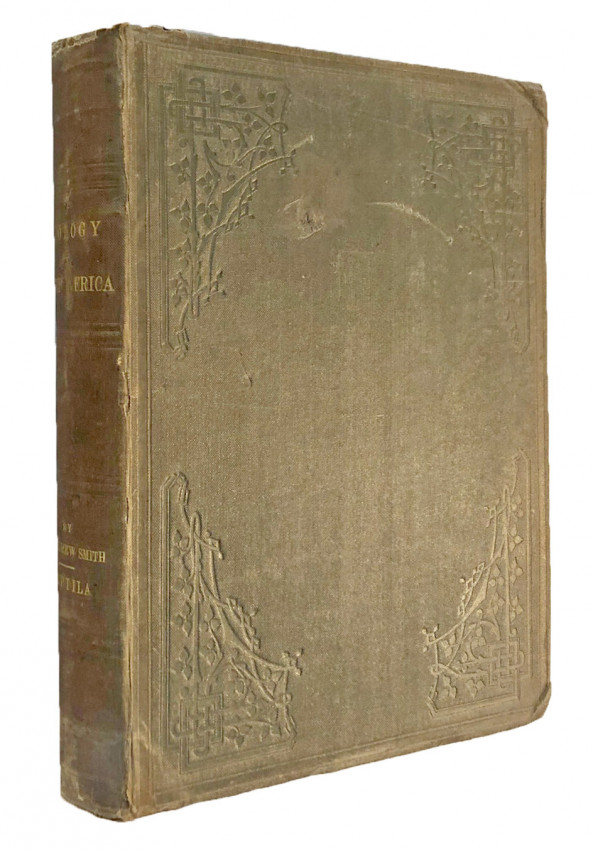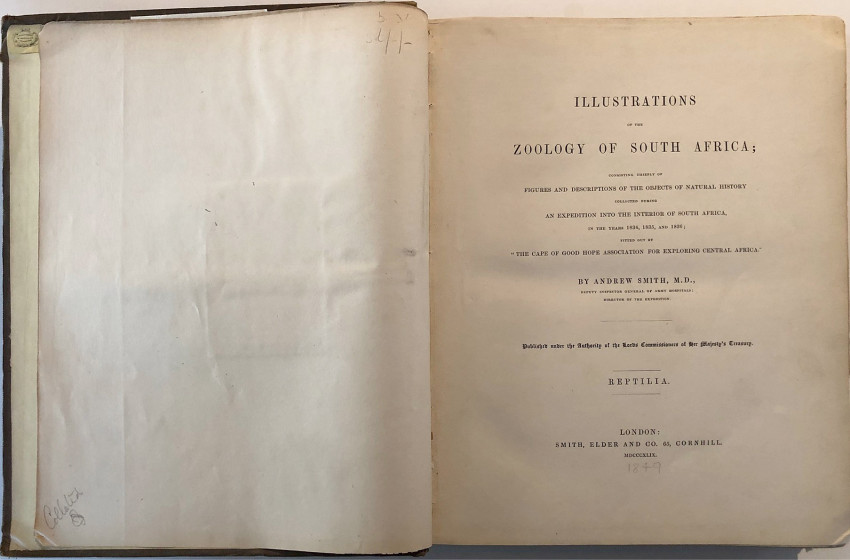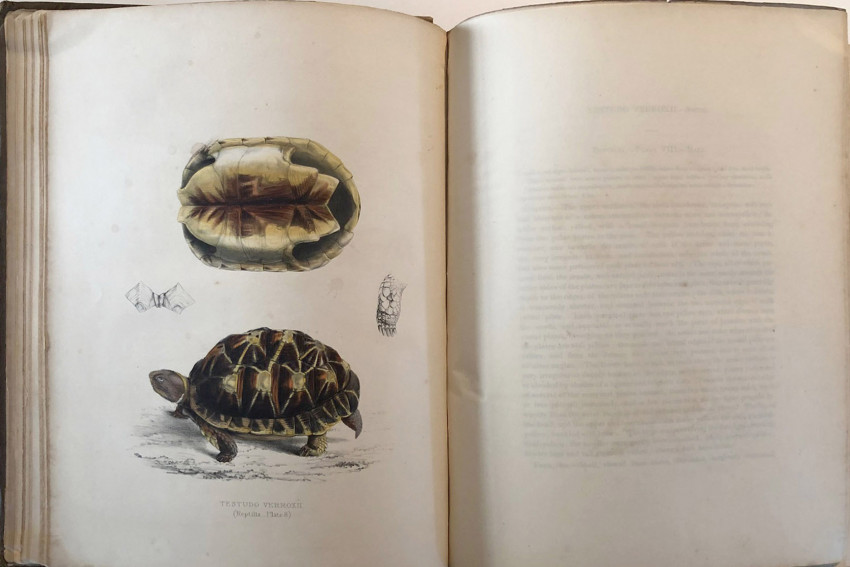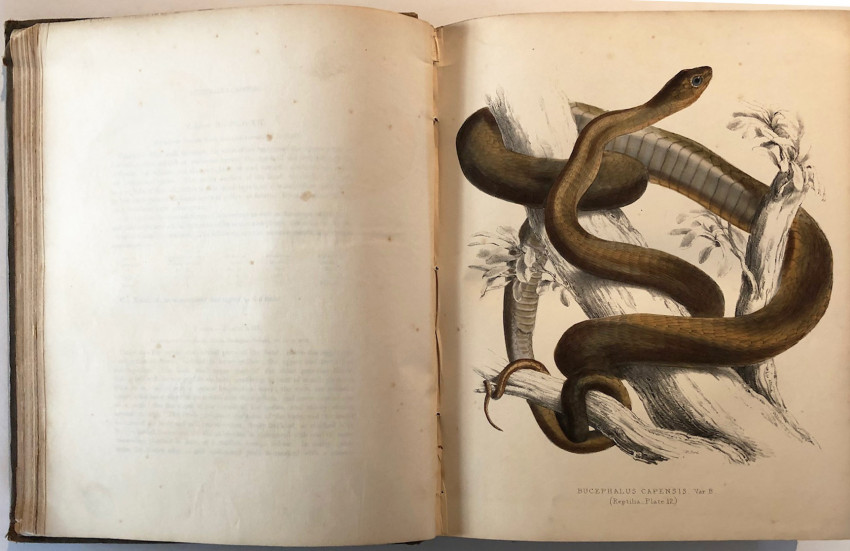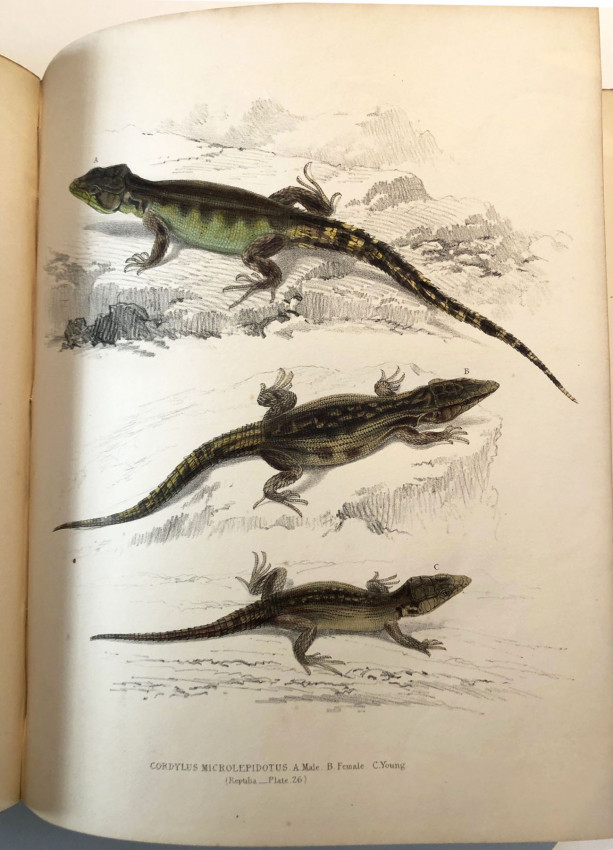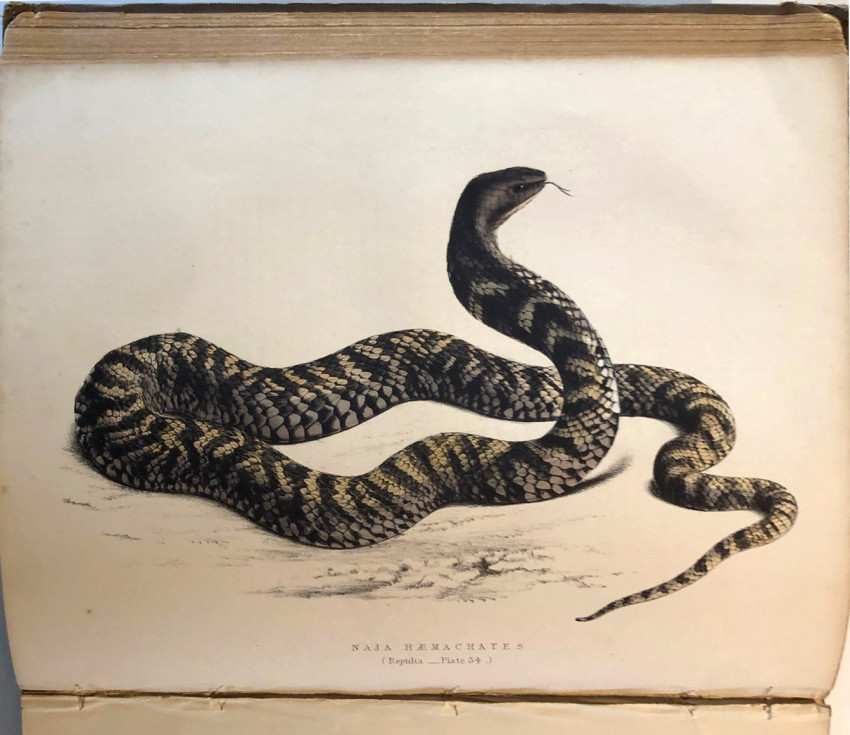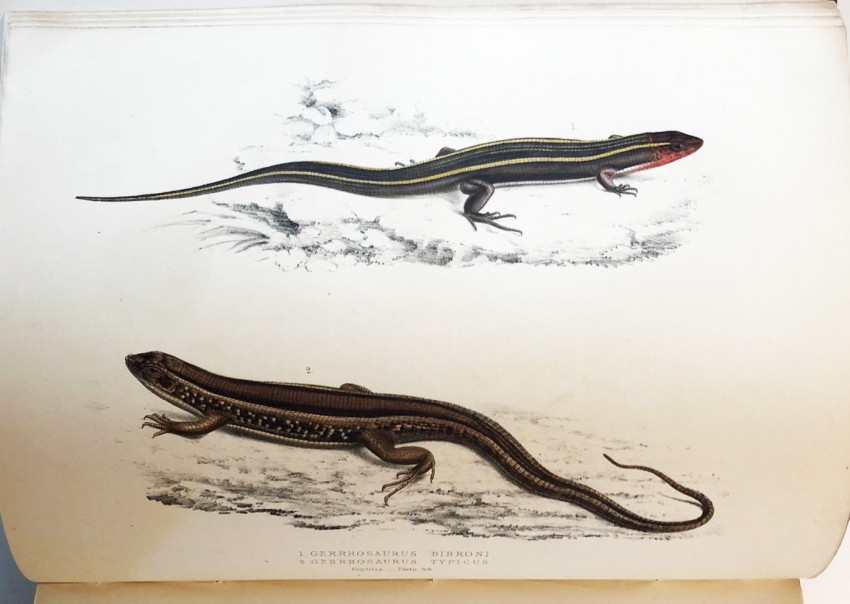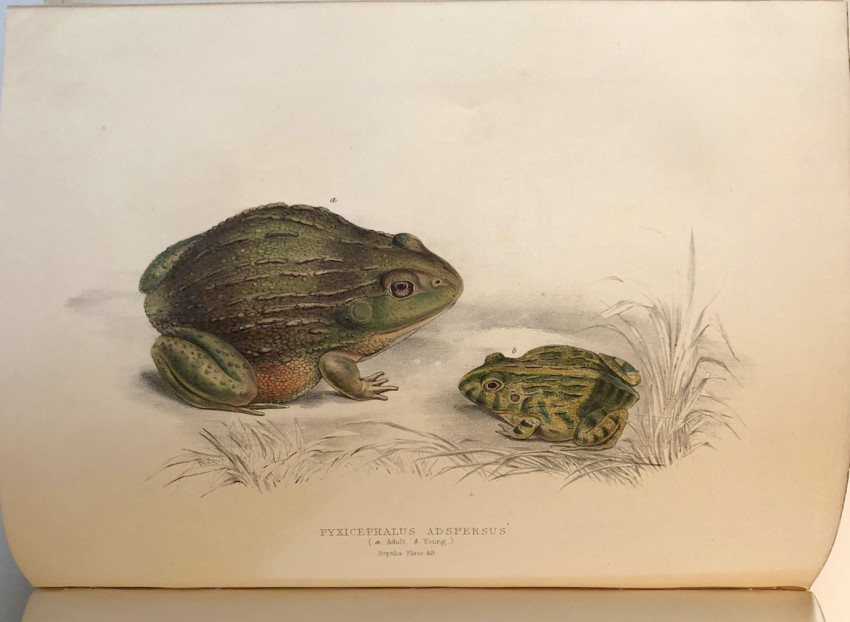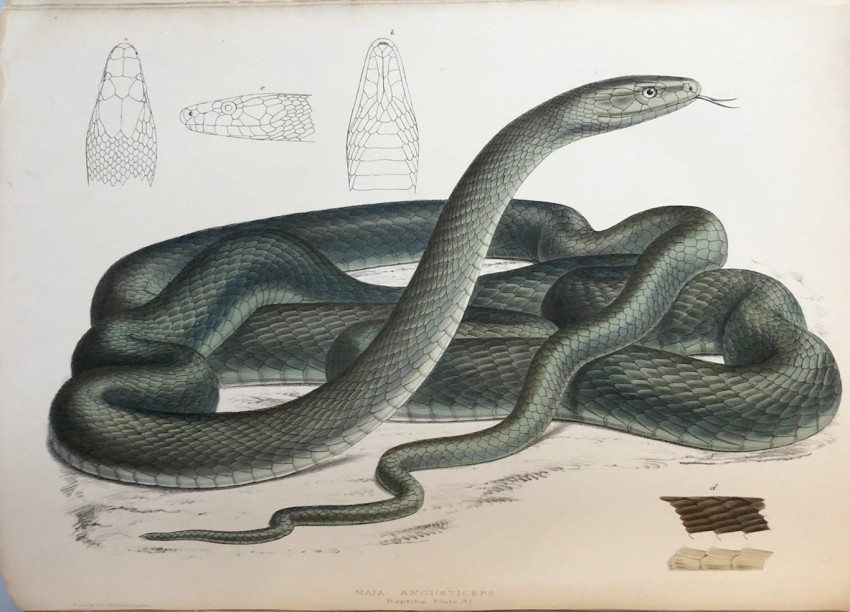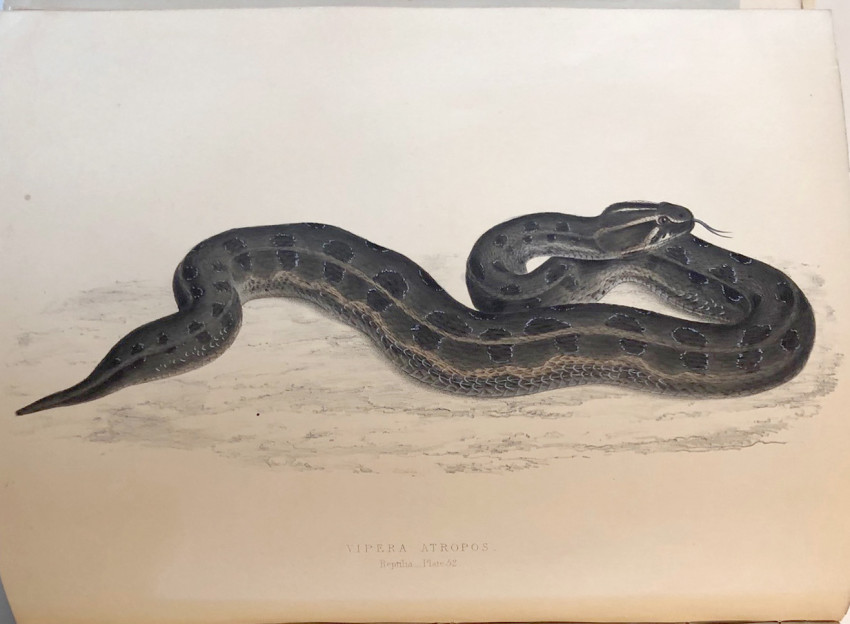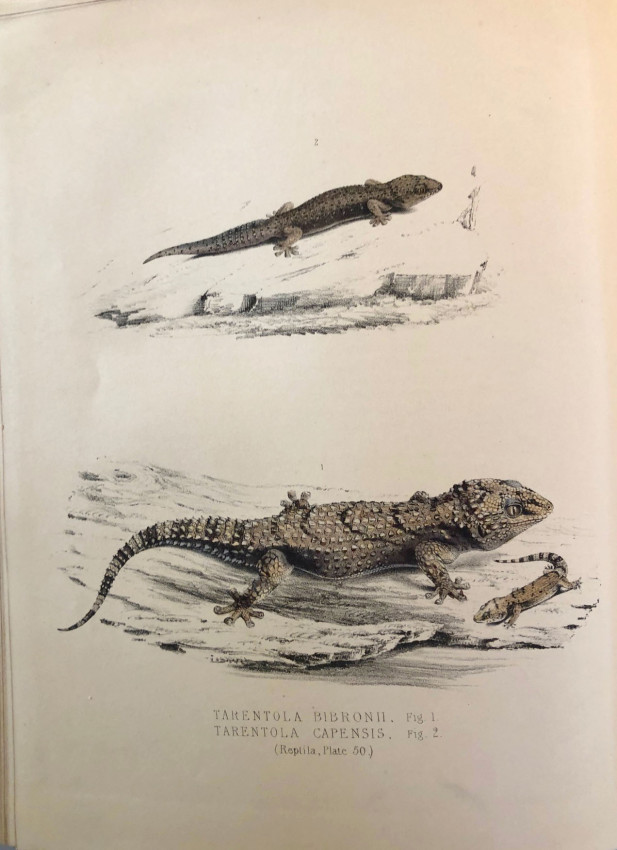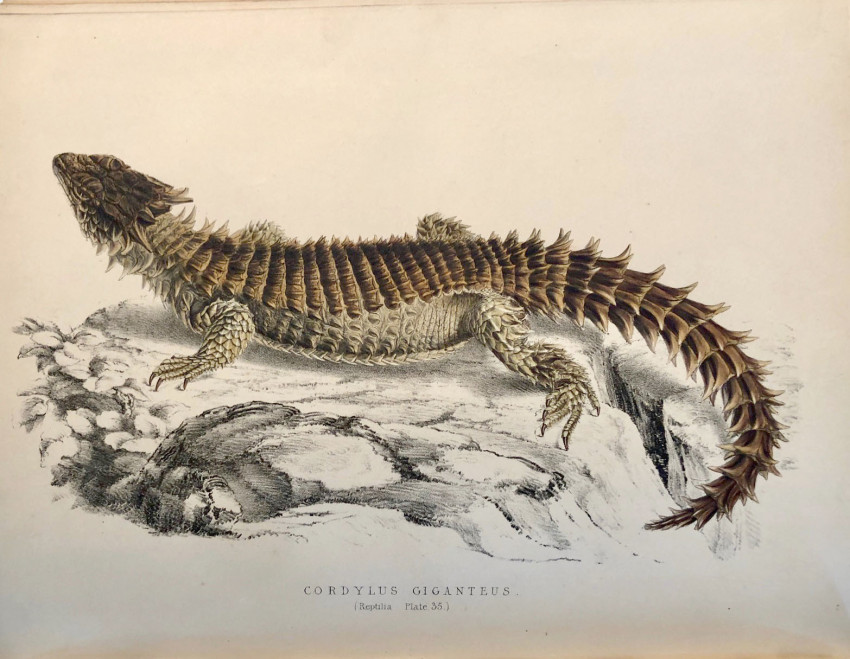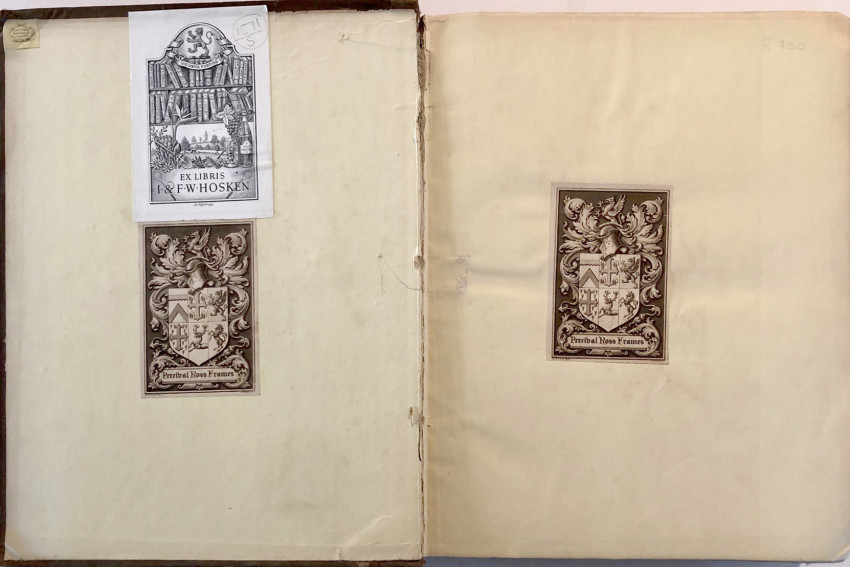The scarce first edition of this volume "Reptilia", constituting one of the five volumes of Smith's landmark Zoology of South Africa work (the others being - Mammalia, Aves, Pisces and Invertebratae). The work was originally published in 28 parts between 1838 and 1849, and then in volume form in 1849. In the original embossed decorated dull green cloth with gilt lettering on the spine. Large 4to. containing 78 full page superb lithographic plates of snakes, frogs, lizards etc., 75 of which are hand-coloured, with detailed letterpress descriptions of each species (unpaginated). The plates were taken from drawings made by an expedition member George Henry Ford (1809-1876).
Condition: The original cloth binding has moderate age wear with some fraying and bumping of corners. There is a 1+cm. snag/tear of the lower spine without loss. The inner hinges are cracked but the underlying gauze is intact and so the volume remains tight. The plates are protected with bound in interleaving sheets, one of which, opposite Plate 43, has become detached but is still complete and present.There is an armorial ex libris of an early owner on both the front pastedown and the front free endpaper as well as the later ex libris of Africana collector F.W. Hosken on the front pastedown. Internally the book is remarkably clean and fresh with only a very occasional spot of minor foxing.
All volumes of Smith's Zoology are uncommon in the original bindings.
Sir Andrew Smith KCB (3 December 1797 – 11 August 1872) was a Scottish surgeon, explorer, ethnologist and zoologist. He is considered the father of zoology in South Africa having described many species across a wide range of groups in his major work, Illustrations of the Zoology of South Africa. In 1820 he was ordered to the Cape Colony and was sent to Grahamstown to supervise the medical care of European soldiers and soldiers of the Cape Corps. He was appointed the Albany district surgeon in 1822 and started the first free dispensary for indigent patients in South Africa. He led a scientific expedition into the interior and was able to indulge in his interests of natural history and anthropology. Smith met the young geologist Charles Darwin when the second voyage of the Beagle touched at the Cape in May 1836, and showed him slate rock formations. He also gave Darwin some rock samples he had collected the year before. These are now held by the Sedgwick Museum of Earth Sciences. Darwin corresponded with Smith about how the large animals in South Africa lived on sparse vegetation, showing that a lack of luxuriant vegetation did not explain the extinction of the giant creatures whose fossils Darwin had found in South America. Darwin frequently mentioned Smith in his writings, and sponsored him to gain membership of the Royal Society in 1857.
- Binding Condition: Very Good Minus
- Overall Condition: Very Good
- Size: 4to.
- Sold By: Ronald Levine - Modern First Editions
- Contact Person: Ronald Levine
- Country: South Africa
- Email: [email protected]
- Telephone: 011643 8437
- Preferred Payment Methods: EFT for South African customers and International Bank Tranfer for customers abroad. I am unable to accept payment by credit card.
- Trade Associations: SABDA


